Last summer I embarked upon a project to build a geodesic sphere that I would mount at a specific point in the pasture to mark true north from a specified central point. I wanted this sphere to be four feet in diameter, and I intended it to contain super brighted colored LEDs on each hub, pointing inward toward a 12” diameter mirrored sphere. Moreover, the LEDs would be controlled by an Arduino that would illuminate them in a variety of moving patterns.
After researching the various systems available for sale, I determined that none of them would suit my needs. So I designed my own scheme. I started with about 20 feet of 2x4 lumber. I cut each 2x4 lengthwise to make two 2x2. Then I carefully set the angle on my cutoff saw and cut a series of triangular pieces. One set of pieces had 60º angles; the other set were isoceles triangles with a peak angle of 72º.
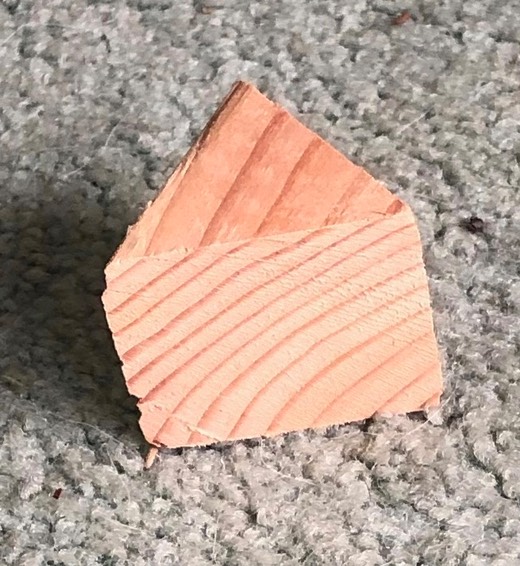
Next, I mounted each of these triangles into a special jig I had built:
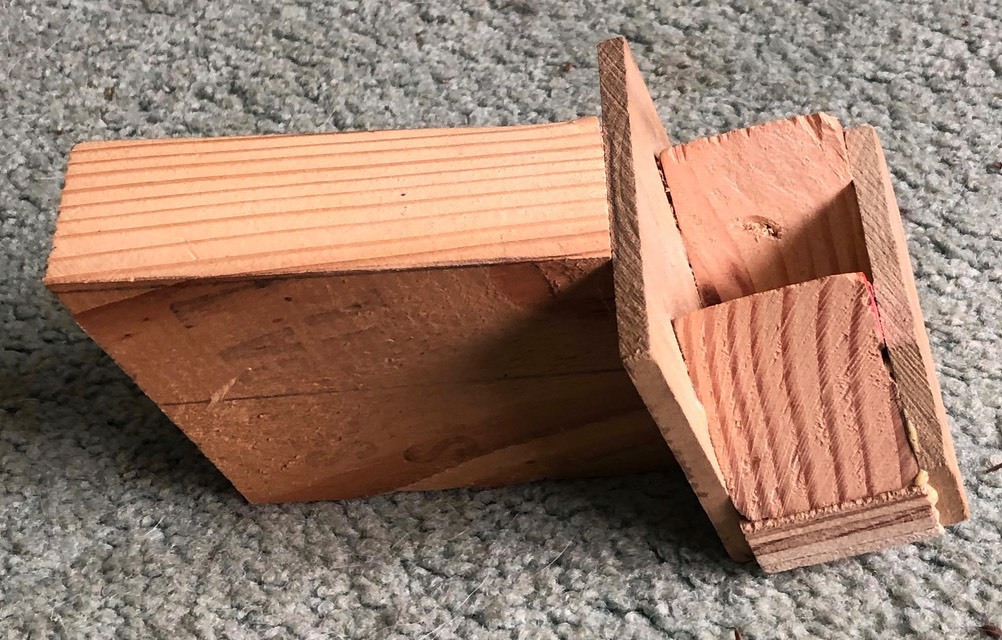
When the triangle was mounted in the jig, it looked like this:
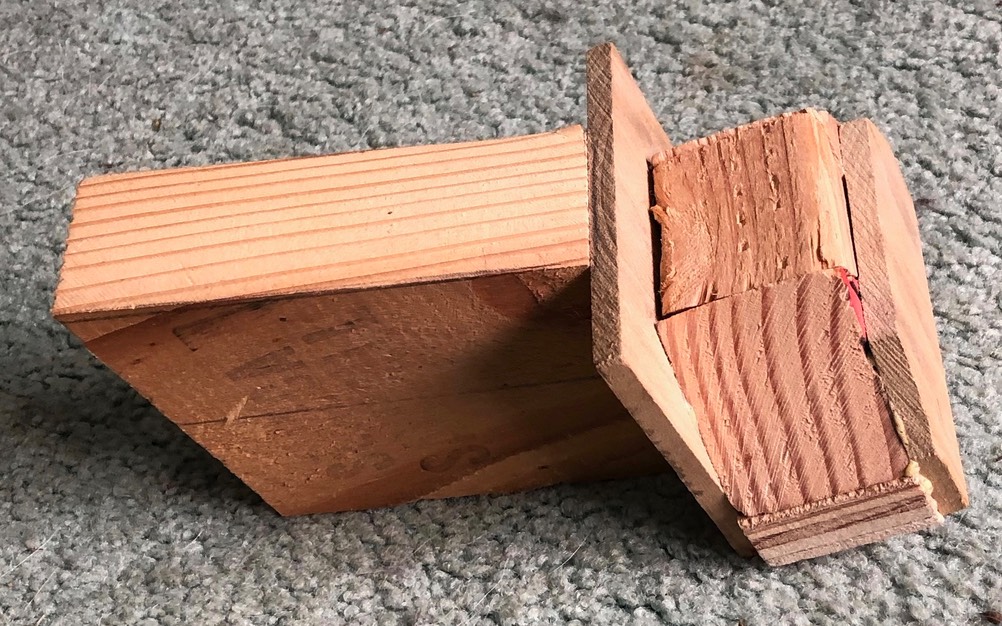
Then I stuck the thing in my drill press and drilled a hole. Note that the jig holds the triangular piece at a precise angle of 10º.
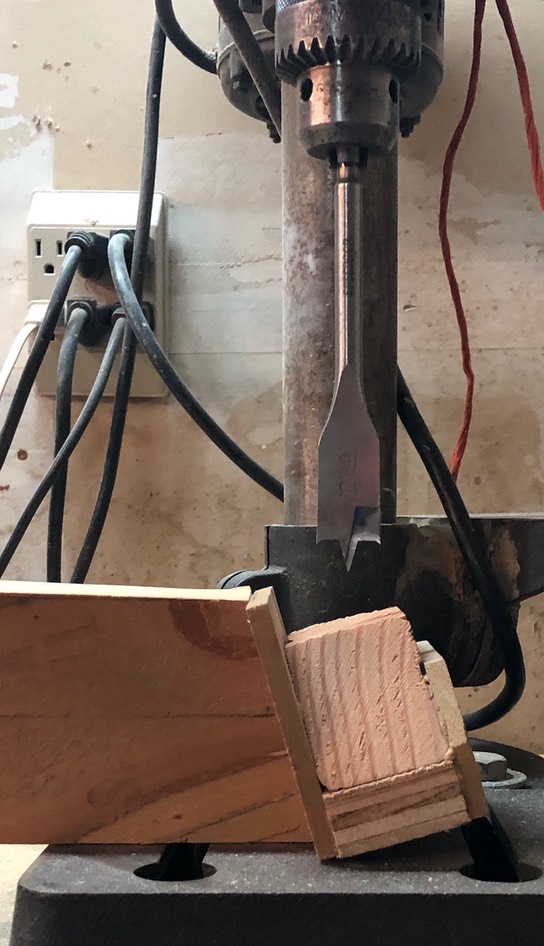
Next, I glued five of the triangles together to make a pentagon:
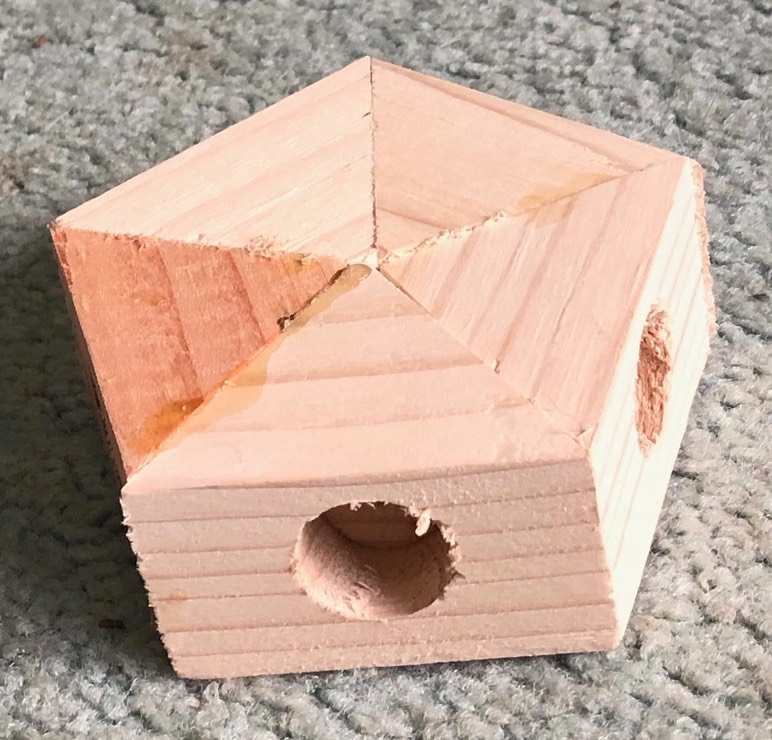
This was a slow process because I had to build up the pentagons in steps, only gluing two parts together at a time, using a pair of clamps to hold them tight and giving them at least 4 hours for the glue to set firmly. I had only two pairs of clamps, so I could only glue together two pieces at a time. Roughly speaking, I could make about two pentagons per day.
Next, I cut out a bunch of pentagons out of 1/4” plywood. These served as end caps on both sides of the pentagon to give it lateral strength.
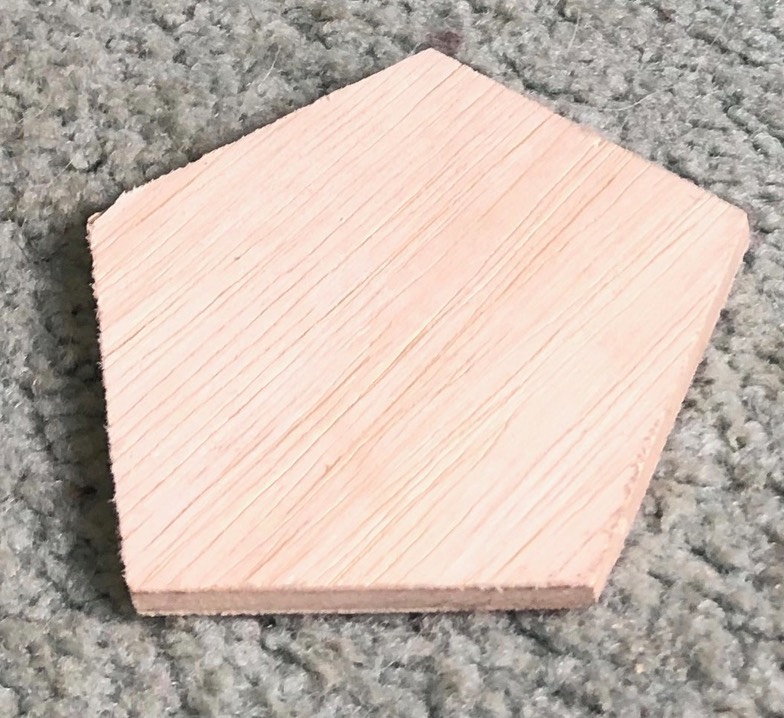
When I glued both pieces onto each end, I got something like this:
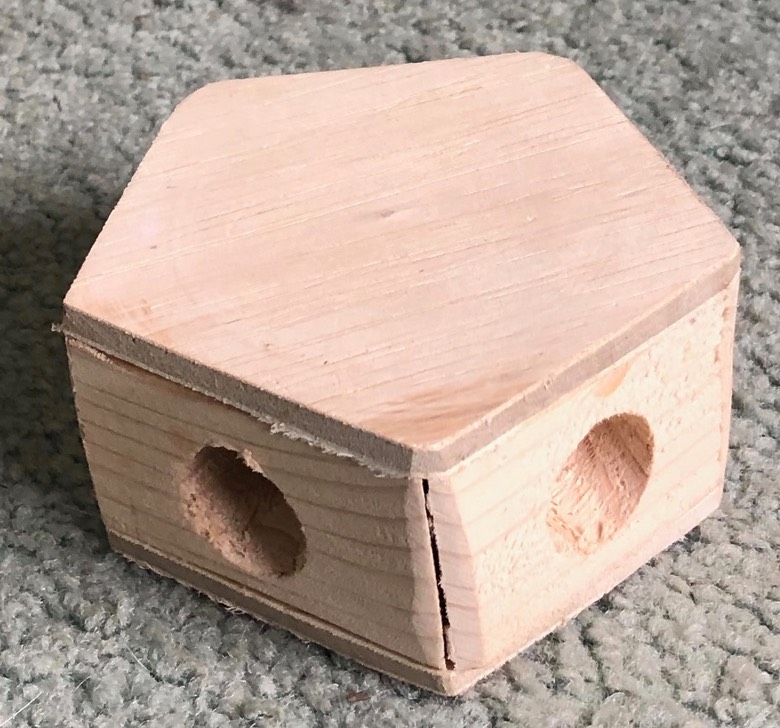
The geodesic sphere uses both pentagons and hexagons; the hexagons were made by the same system, but with different angles. There were something like 40 of these different hubs. That meant about 220 triangular pieces glued together. All in all, it took about two months to get them all done.
Next, I had to install the LEDs. This required drilling a hole in the hub, soldering a 200 ohm resistor on the cathode, covering it with shrink wrap, and then soldering a socket onto the ends. The result looked like this:
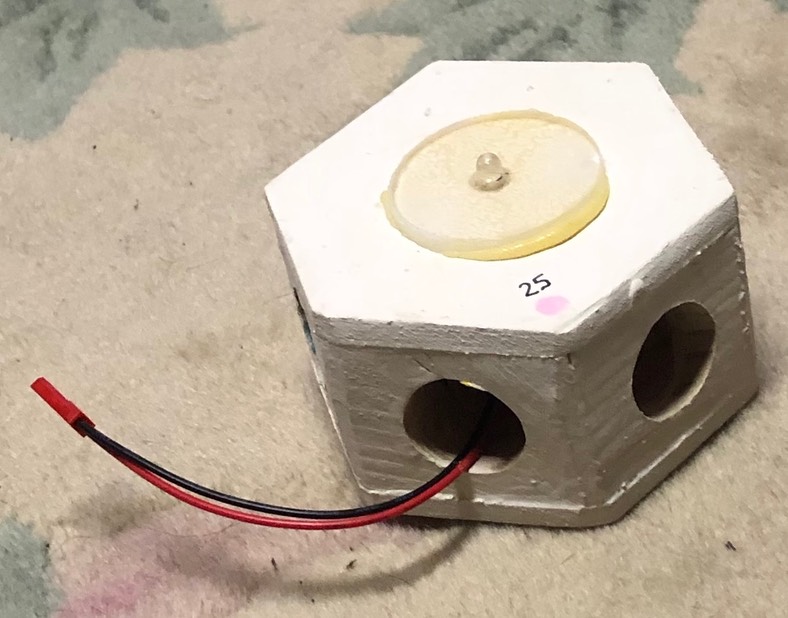
Note that the electrical socket comes out of one of the holes. This was part of my plan: the struts connecting the hubs were 1/2” PVC pipes, and the wires would run through the pipes, never being exposed to the outside elements. I had to cut about 120 pieces of PVC pipe, in two different lengths, and they had to be precisely the correct length.
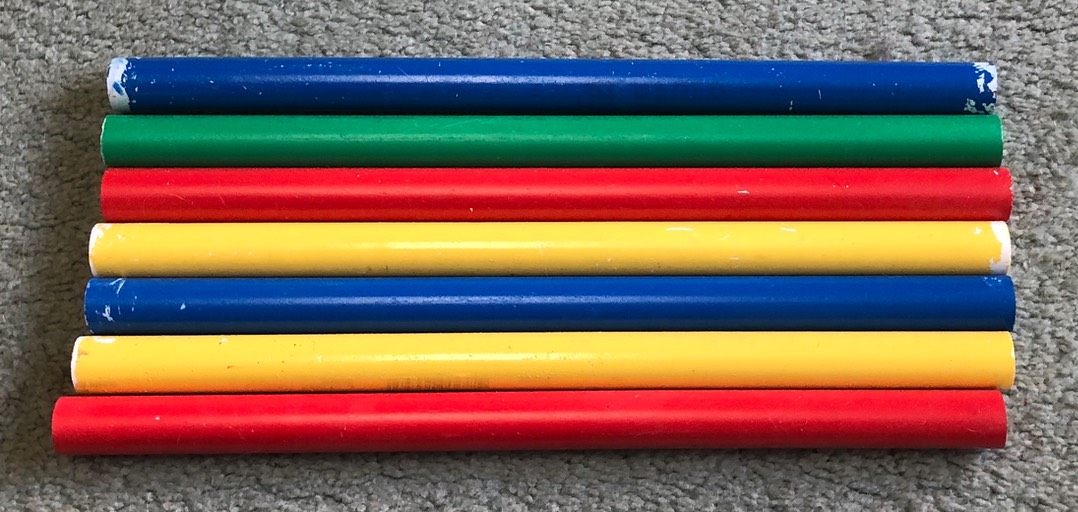
I also painted them in festive colors.
In order to get everything lined up, I had to plan the lengths of the wiring carefully. Here’s the blueprint for that:
Note also that each hub had to be numbered and they had to be placed in specific locations. So I started building the geodesic sphere, hub by hub, running the wiring through the pipes and hooking all the plugs into all the sockets.
Here’s where senility struck. The longer struts run between hexagons, but all struts connecting to a pentagon must be short struts. Somehow I got this backwards in my mind and glued in the wrong length struts. I found my mistake only after I had gotten about ten hubs built. I went through much rigamarole correcting that error.
But then another problem struck: the wiring wouldn’t quite fit. At the junctions where there were a lot of wires, it would get tangled up during installation and sometimes the plugs would unplug. After many failed experiments, I decided that I couldn’t run the wiring through the pipes and I’d have to wire it up externally. It would look like crap, but at least it would work.
So I set to work simply assembling the geodesic sphere without concern for the electronics. Here’s as far as I got:
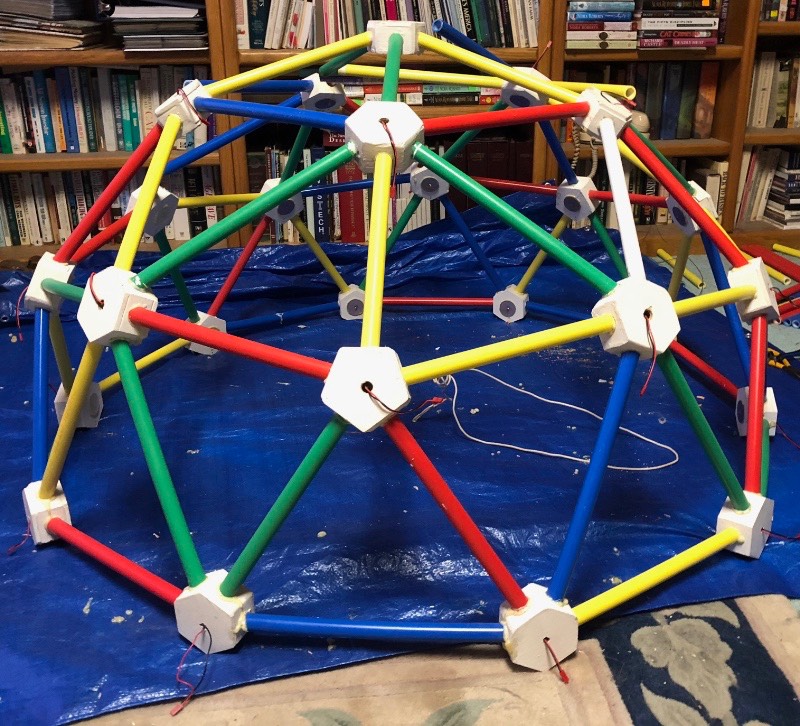
Looks pretty good, doesn’t it? That’s because this photo doesn’t show the back side:
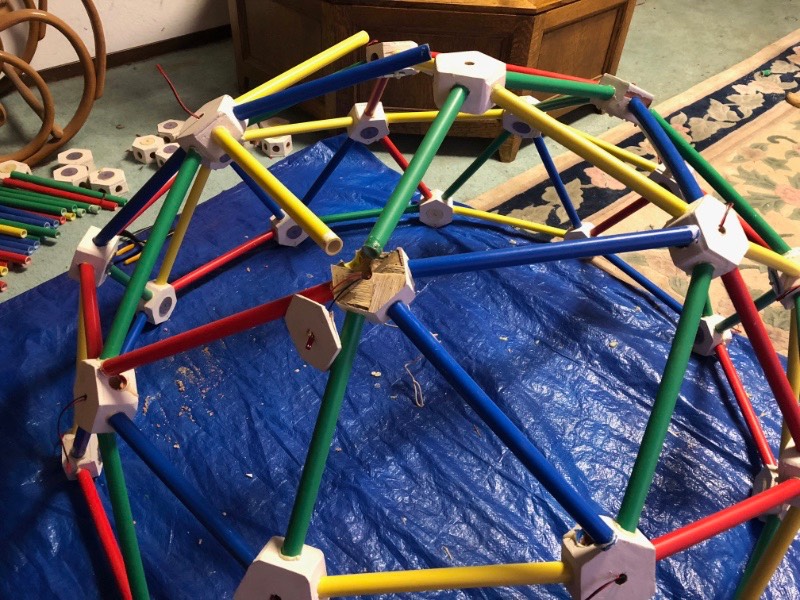
Oops! One of the hubs broke apart under the stress. I had been having increasing difficulty getting all the struts and hubs to line up, and this one was the last straw. Obviously, there was something wrong. I worried about it for a day, trying to figure out the nature of the problem. And then, while talking on the phone to a friend about a completely different subject, the answer leapt into my consciousness (creativity works that way). Go back up to the first photo of the geodesic dome. Count the hubs along the equator; that is, the circle of hubs along the floor. Did you get ten hubs? Good! I knew you could do it!
Now, ten hubs are required to complete a full circle. There are 360º in a full circle. Therefore, each of the ten hubs must have a total bending of 36º. That means that the angle of each strut relative to the hub should be 18º (because there are two struts on each hub along the equator). But I cut the hub angles at 10º! The angles were much too small, so the struts have to bend and the whole structure is under a lot of stress. In the end, it just couldn’t do it. If you look closely at the struts in either of the two photos above, you can see that some of them are curving under the stress.
More cogitation ensued, after which I concluded that the entire system was too deeply flawed to be recoverable. I simply must throw away the whole thing. I put hundreds of hours of work into this, and it’s all for nought.
How could I have made such a stupid mistake? Where did the 10º figure come from, anyway? I have no idea. Sometime during the process, I figured out that I needed 10º angles. I was wrong, and I don’t know why.
But I’m not abandoning the project. I’m going to start over. My current new design — which will undoubtedly change dramatically as I implement it — calls for much thinner struts: probably 1/4” dowels. These can fit into slabs of 1 1/2” dowel cut to 3/4” thick pieces. The trickiest part will be designing the jigs to insure that the holes are cut at the correct angles, both vertically (18º) and horizontally (either 60º or 72º). I already have an idea for how to build those. They’ll be rather like TinkerToys.
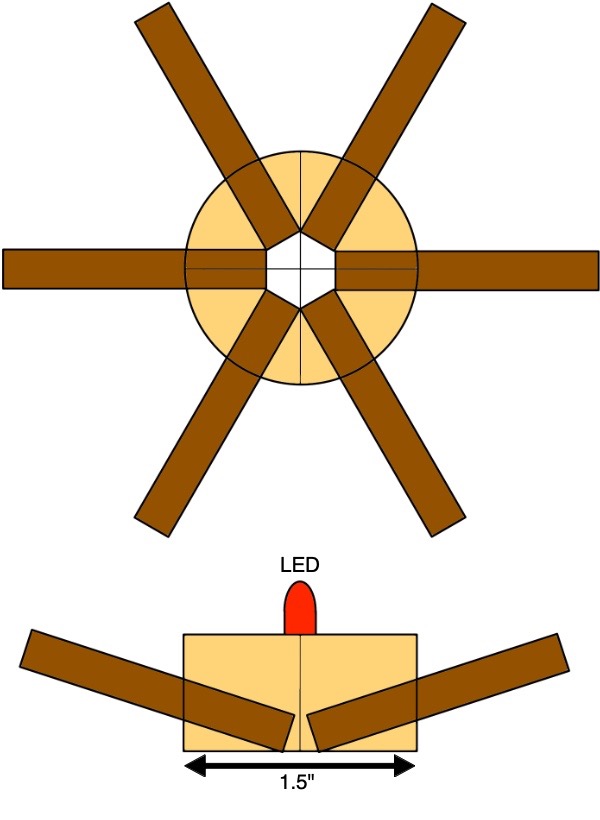
But I will not begin work soon. It’s winter and the shop is freezing cold. I’ll wait until it warms up before I begin construction. That will also give me time to consider the details more carefully.
January 15th, 2019
